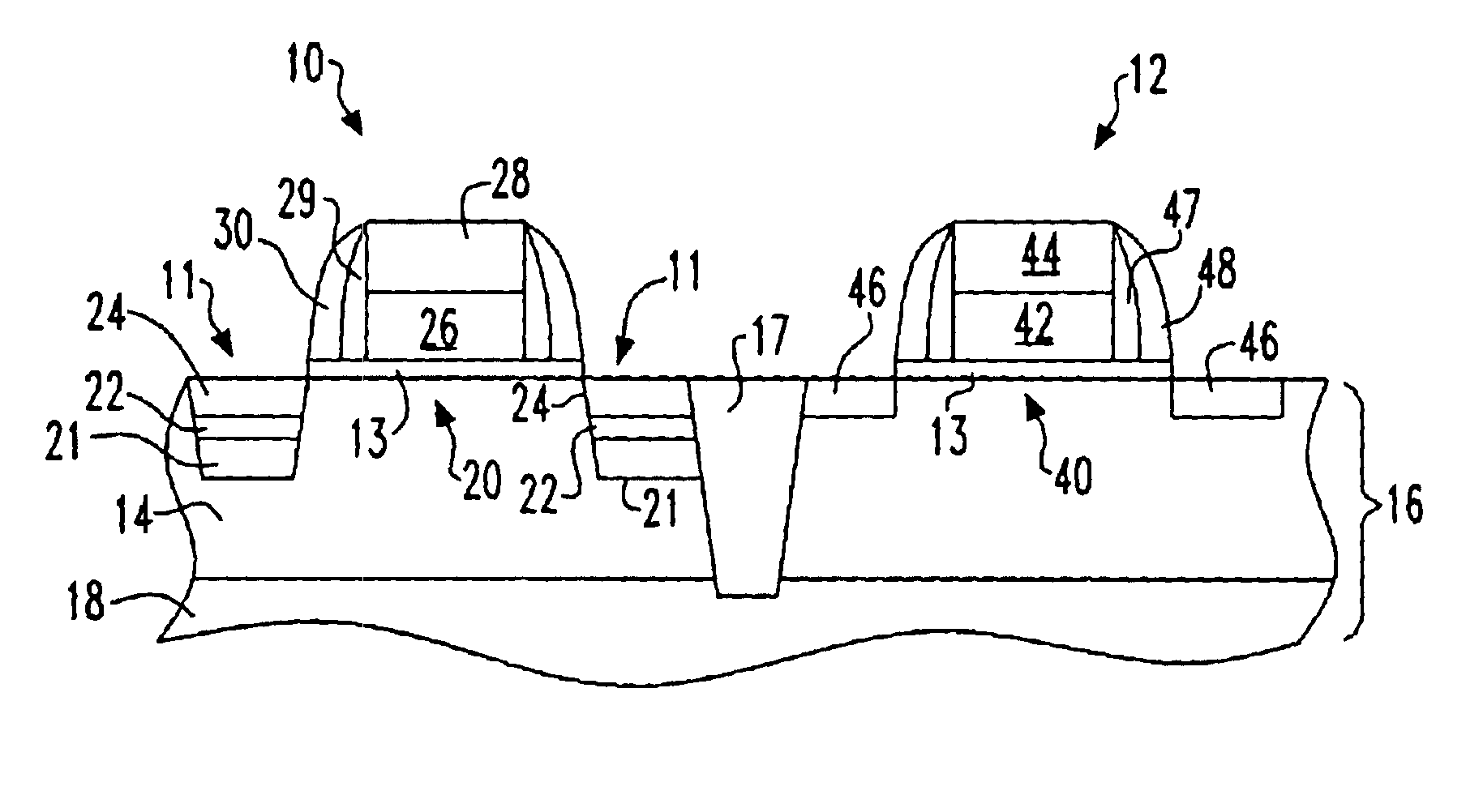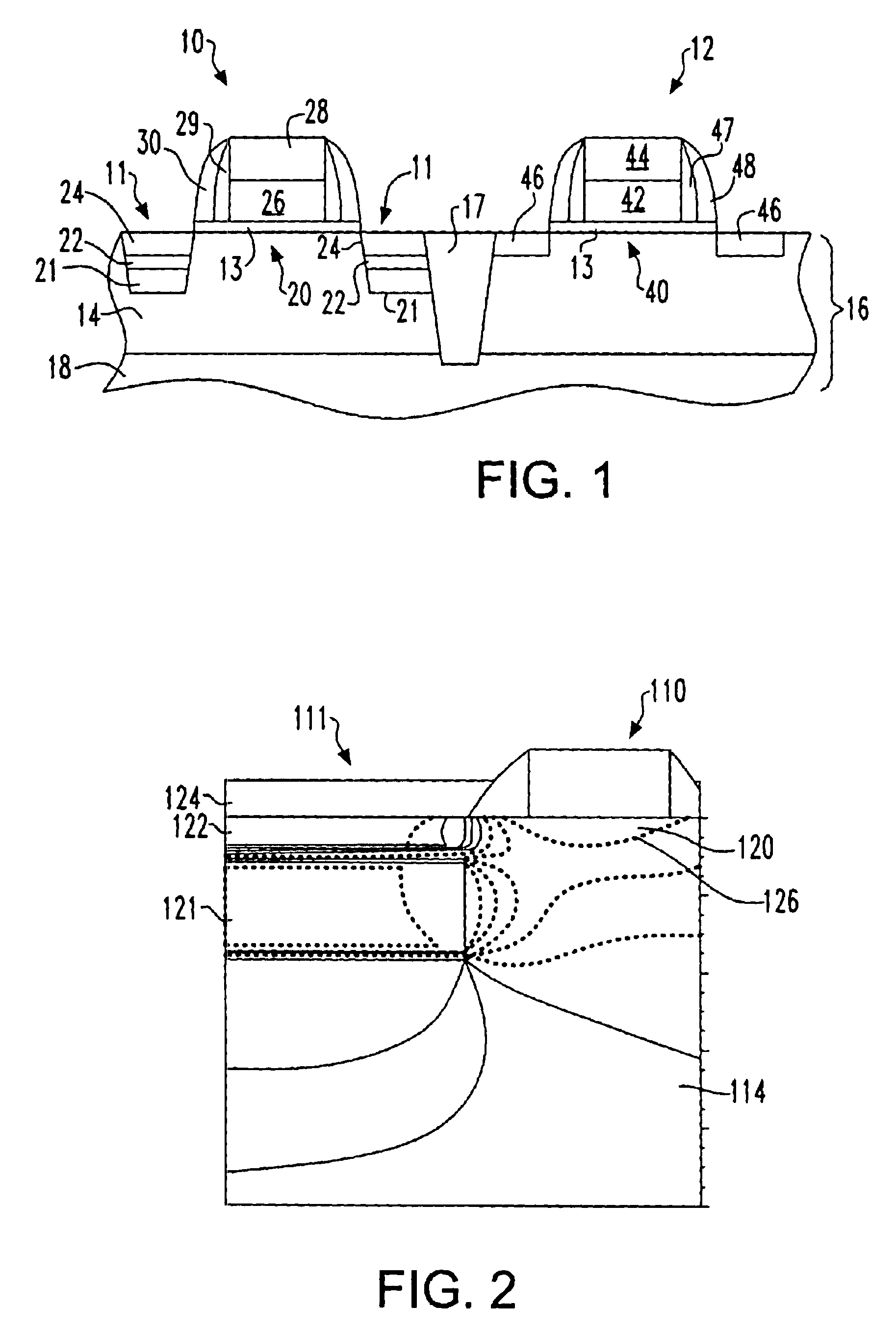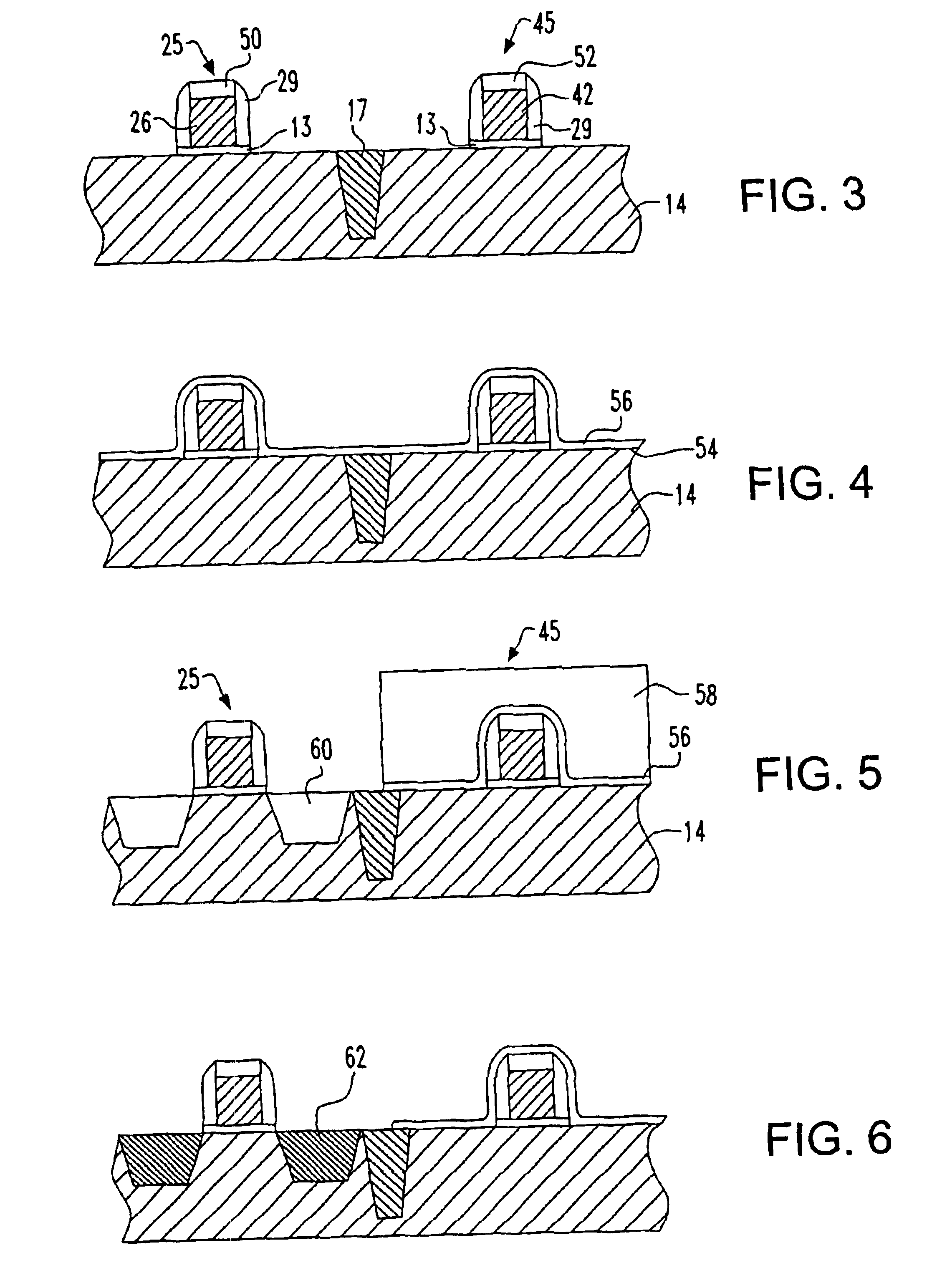Structure and method of making strained semiconductor CMOS transistors having lattice-mismatched semiconductor regions underlying source and drain regions
a technology of complementary metal oxide semiconductors and strained semiconductors, which is applied in the direction of transistors, semiconductor devices, electrical apparatus, etc., can solve the problems of reducing performance, difficult to obtain holes with improved mobility, and yield problems
- Summary
- Abstract
- Description
- Claims
- Application Information
AI Technical Summary
Problems solved by technology
Method used
Image
Examples
Embodiment Construction
[0019]FIG. 1 illustrates a p-type field effect transistor (PFET) and an n-type field effect transistor (NFET) according to an embodiment of the invention. As illustrated in FIG. 1, the PFET 10 and NFET 12 are fabricated in a single-crystal semiconductor region 14 of a substrate 16, separated by a trench isolation region 17, typically of oxide. The substrate 16 may either be a bulk substrate or may preferably be a semiconductor-on-insulator or silicon-on-insulator (SOI) substrate in which a relatively thin layer of a semiconductor is formed over an insulating layer 18. When field effect transistors (FETs) are formed in such SOI substrates, faster switching operation is often achieved than otherwise, because junction capacitance between the channel region of the transistor and the bulk substrate is eliminated. The substrate is preferably a bulk single-crystal silicon substrate, and more preferably a silicon SOI substrate having a single-crystal silicon region above an insulating layer...
PUM
 Login to View More
Login to View More Abstract
Description
Claims
Application Information
 Login to View More
Login to View More - R&D
- Intellectual Property
- Life Sciences
- Materials
- Tech Scout
- Unparalleled Data Quality
- Higher Quality Content
- 60% Fewer Hallucinations
Browse by: Latest US Patents, China's latest patents, Technical Efficacy Thesaurus, Application Domain, Technology Topic, Popular Technical Reports.
© 2025 PatSnap. All rights reserved.Legal|Privacy policy|Modern Slavery Act Transparency Statement|Sitemap|About US| Contact US: help@patsnap.com



